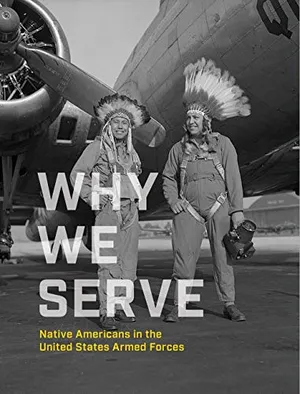Secretary Lonnie Bunch on the New Memorial to Native American Veterans
Located in front of the National Museum of the American Indian, the sculpture reminds us of the true burden of freedom
/https://tf-cmsv2-smithsonianmag-media.s3.amazonaws.com/filer/24/1b/241b0734-14a4-42d3-8d90-1d98be34e205/monument.jpg)
In my family, Veterans Day was one of the most important days of the year. My father served in Germany at the end of World War II; every year, he took me into town to see the local parade. I was always captivated—not just by the tanks and the spectacle of the event (although I certainly enjoyed those), but by the people. As a kid growing up in the wake of the war, I was always moved by the sight of older men marching with a limp. I sensed that these people had sacrificed something for the country. Honoring them was not only about valor and victory; it meant recognizing that they carried a burden for my freedom.
To me, Veterans Day has always brought the unimaginable scope of war to a human scale. The day invites us to remember our history, to honor both those who served recently and those who served long ago. And it asks us to consider what service means in our own lives.
As a national museum complex, the Smithsonian has a unique responsibility to honor our veterans. Through exhibitions like “We Return Fighting” at the National Museum of African American History and Culture, we are telling lesser-known stories of those who fought for democracy abroad. And this November, the Smithsonian celebrates Veterans Day by marking the completion of the National Native American Veterans Memorial at the National Museum of the American Indian. Native peoples have served in the United States military since the American Revolution and continue to serve at one of the highest rates per capita of any population group. As commissioned by Congress, the memorial will recognize—for the first time on a national scale—the extraordinary service of these men and women and our shared obligation to honor this legacy.
I have always thought that you can tell an enormous amount about a nation by what it chooses to remember. This memorial and others to veterans, both on the National Mall and around the United States, are vital corners of our national memory. And although the parades of my childhood recede further into the past, we still find ways to honor those who join the ranks. This month, I reflect on the service and the sacrifice of generations of Americans: our family members, our friends, and those who bear us no relation but the common bond of country.
Why We Serve: Native Americans in the United States Armed Forces
Why We Serve commemorates the 2020 opening of the National Native American Veterans Memorial at the Smithsonian National Museum of the American Indian, the first landmark in Washington, DC, to recognize the bravery and sacrifice of Native veterans.
A Note to our Readers
Smithsonian magazine participates in affiliate link advertising programs. If you purchase an item through these links, we receive a commission.
/https://tf-cmsv2-smithsonianmag-media.s3.amazonaws.com/accounts/headshot/lonnie_new1.jpg)

/https://tf-cmsv2-smithsonianmag-media.s3.amazonaws.com/accounts/headshot/lonnie_new1.jpg)